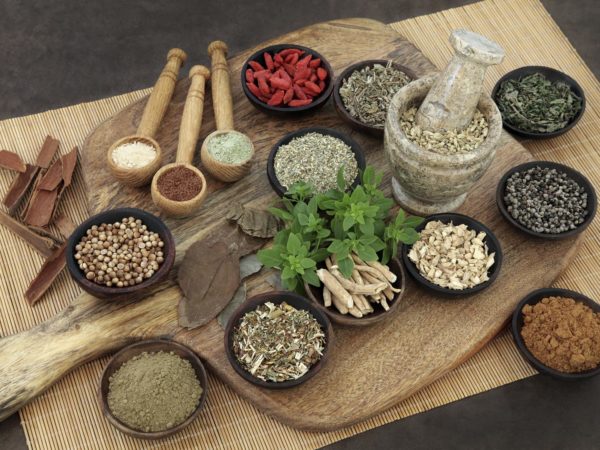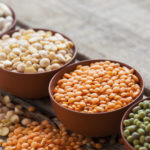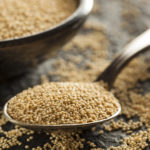Cooking With Spices

Herbs and spices have a prominent position on my Anti-Inflammatory Diet Pyramid because many of these culinary staples offer twin health benefits:
1.) Flavor enhancement, possibly inspiring reluctant eaters to enjoy nourishing foods that might otherwise be avoided as “boring” or “bland.”
2.) A host of healthful compounds that can both lower disease risk and alleviate symptoms of existing conditions.
As my colleague Tieraona Low Dog, M.D., an internationally recognized expert in the fields of integrative medicine, dietary supplements and women’s health, puts it, “Many spices and culinary herbs have a wide array of valuable antioxidant, antimicrobial, anti-inflammatory, and anti-carcinogenic compounds. When you can get those advantages along with wonderful fragrances and flavors, it just makes sense to learn to use them in every meal that you prepare.”
Before going further, let me offer some definitions. Herbs and spices are parts of plants that are used principally for flavoring or medicine, rather than as significant sources of daily calories. What’s the difference between the two? Herbs are typically the leafy, green portions of a plant. Spices are derived from other parts including seeds, berries, fruits, bark and roots.
Both spices and herbs have a long history of human use. European tribes in what are now Denmark and Germany used garlic mustard seeds to add a spicy kick – and, perhaps, some medicinal qualities – to cooked game as far back as 4,000 BC.
Today, it’s important to note that America is one of the few places on earth that makes a strong distinction between culinary and medicinal uses for herbs and spices. In many cultures, these properties – and the words that describe them – are either identical or quite similar. When Hippocrates exhorted his students to “Let food by thy medicine, and medicine be thy food,” he was, to a large extent, handing them a peculiarly Western piece of advice. Some Eastern cultures – especially those of China – never made the distinction in the first place.
As nature-based medicine has grown in popularity in the U.S., many people have begun taking herbs and spices in pill or capsule form. There is nothing wrong with doing so, and if you happen to dislike the flavor of, say, turmeric or basil, taking these as supplements is totally acceptable.
Even if you enjoy the flavors of these herbs, if your life is such that you simply don’t get the chance to eat them often, by all means, add these supplemental herbs and spices to your daily regimen.
But if possible, I strongly urge consuming these herbs and spices as culinary additions as well. If variety is the spice of life, then herbs and spices are the foundation of variety in cooking, transforming everyday foods into new and exciting culinary adventures.
I urge you to explore this exciting frontier on your own. Meanwhile, here are a few general rules of use to get you started:
- Fresh is best for flavor. Even if you have no room for a vegetable garden, virtually every home or apartment has a window that can support a few pots of growing herbs. If you simply can’t grow them, take advantage of the fresh herbs that are now widely available in the produce section of most supermarkets and natural food stores.
- Dried herbs often suffer from muted flavors because the essential oils have volatized away. Two ways to encourage the flavor to return – crush with your fingers or a mortar and pestle just before cooking to release the oils that remain. You can also briefly sauté them with olive oil on low heat.
- If you do use dried herbs and spices, store them in tightly covered containers away from light, heat and moisture. Don’t sprinkle from a container into a steaming pot – the steam will enter the container and degrade the spice over time. Shake into your palm, away from the steam, before adding to the dish.
- Generally speaking, dried, ground herbs and spices are typically good for up to six months.
Consider these spices in your healthy kitchen:











